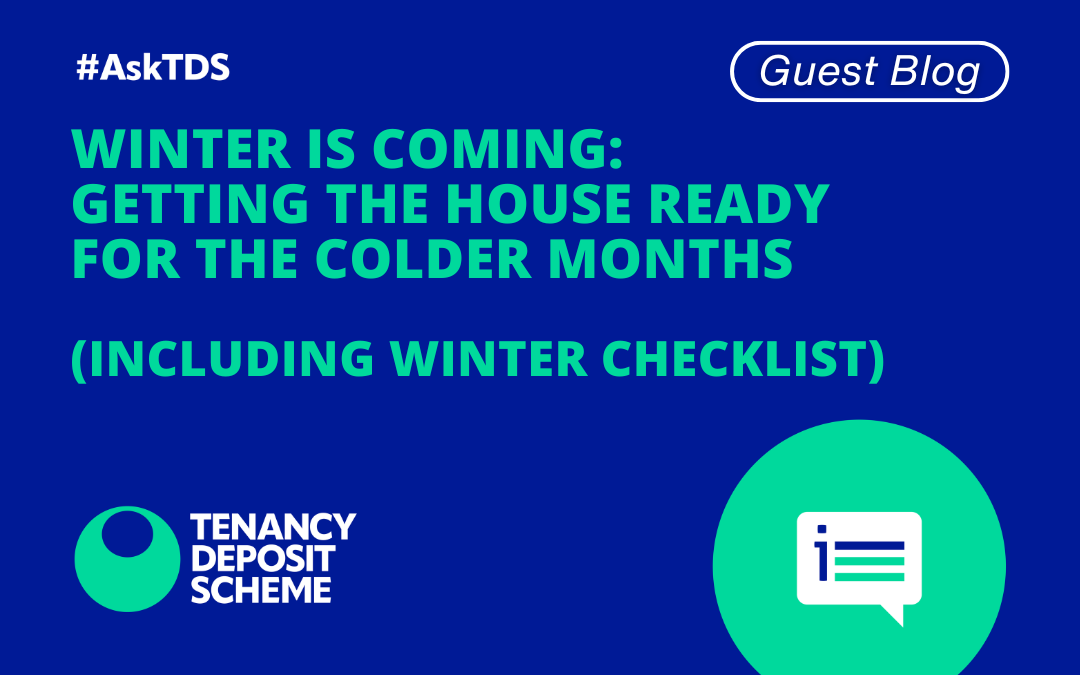In this month’s Guest Blog The Tenancy Deposit Scheme (TDS) provide valuable advice to share with your landlords on how to prepare and protect their properties against the harsh weather ahead.
With the onset of colder weather, your property may face problems such as frozen pipes, blocked gutters and mould and damp. This is the time when properties are most vulnerable to weather damage. To ensure the safety of your tenants and protect your rental property during this period, we have compiled a list of common questions and created a helpful checklist to help you stay ahead of the wintry weather.
Remember to clarify responsibilities
To ensure the property is well-maintained over winter, it’s important to establish clear responsibilities within the tenancy agreement. This includes tasks such as gutter cleaning and radiator bleeding. Prior to winter hitting, it’s worth reviewing your tenancy agreement to see what your responsibilities are, and what your tenant should be looking after. By doing so, you can create a constructive and proactive approach to property maintenance, especially during unpredictable weather conditions. If tenants fail to uphold their end, ensure your tenancy agreement includes a deposit use clause permitting deductions for necessary repairs.
Winter neglect can affect gardens and outdoor areas. Be mindful of potential concerns, such as fallen leaves blocking drains or overhanging branches causing damage. Clearly define garden responsibilities in the tenancy agreement and promptly address maintenance needs to prevent disputes.
Conduct a winter inspection (if the tenancy agreement allows)
Even the most well-kept properties can face unexpected issues during the winter months, so conducting inspections around this time allows you to identify potential concerns before they escalate. At TDS, we frequently encounter disputes stemming from issues that aren’t the tenant’s responsibility, and while tenants have an obligation to report problems, inspections can uncover overlooked issues.
The winter inspection should not only include the heating system but also checks on internal and external pipes to ensure that they are insulated well, and the external drains and guttering are cleared. Internal checks for mould, damp and condensation, as well as providing guidance to tenants on how to prevent these issues from occurring during winter months, can help prevent any future potential disputes.
Ensure the tenancy agreement includes a clause allowing periodic inspections with proper notice. Provide tenants with a record of your winter checks and leave them advice on preventing freeze-ups.
Winter maintenance checklist
- Make sure your gas safety certificate is valid
- Inspect and service large appliances like boilers, electric fireplaces and water heaters
- Bleed the radiators (if needed)
- Check the stopcock is working, and that the tenant’s know where this is located.
- Check poorly ventilated areas for mould and damp
- Check the extractor fans and ventilation are clear of debris
- Check the window frames and doors are sealed well
- Use draft excluders under doorways and around letterboxes
- Expecting the property to be empty during the winter? Run the heating at a low temperature to protect from frozen pipes.
- Check the smoke and CO alarms are all present and in working order
- If there’s a fireplace, ensure it’s clean and clear
- Check the external pipes are insulated and protected from freezing
- Make sure the gutters and drains are clear of leaves and debris
- Clear garden of leaves, trim back hedges and prune trees
- Put away any outside furniture
- Inspect the roof for damage or leaks that could worsen over the winter
- Ensure all locks, security lights, and alarm systems are working properly
- Check there are no leaks when it’s raining in the guttering joints
- Provide tenants with a list of helpful contact numbers in case of an emergency, and make note of to the Christmas period when many companies are running on reduced hours.
The Tenancy Deposit Scheme (TDS) is one of The Letting Partnership’s trusted partners. For more details of who we work with see our Working in Partnership page
* * *


